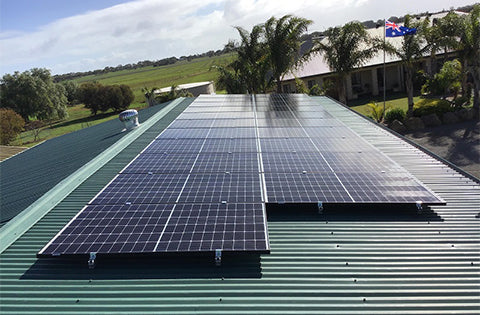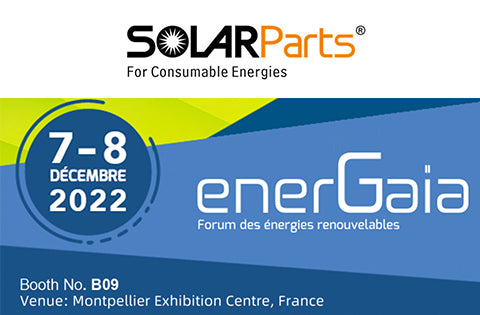As solar energy gradually replace the traditional energy in some fields, it is quite common to see solar has prevailed in our daily life. From residential solar system to large-scale PV power station, solar energy has definitely brought many benefits to us. Investing in solar panels can decrease your greenhouse discharges immensely by rendering a source of renewable energy and clean energy, pointing to less contaminated surroundings. That is why more and more people have started installing solar panels on their rooftops. However, one factor that confuses many people is opting for an active or passive solar energy system.
While both these active and passive solar systems can transform the sun’s beams into direct current, their mechanisms are a bit distinct from each other. Hence it is beneficial to understand them thoroughly before you decide to opt for one for your household.
Understanding active solar systems
Unlike passive solar energy, Active solar system setups depend on outside power sources or backup systems such as radiators and heat pumps to capture, store, and transform solar power into electricity. Depending on the intricacy of the design, it can cool or heat your place or present power to an entire region. Mentioned hereunder are top features of active solar systems:
- The active solar collectors comprise flat-plate PV panels, which are usually connected and non-movable. In high-level designs, these panels get attached to create modules.
- These collectors utilize liquid or air as conductors to collect and convert power. The active solar system that uses liquid is hydronic collectors, while those comprising air are known as air collectors.
- Fluid conductors are more prevalent than air-based, as a liquid is usually more effective at transferring energy. However, air-based active solar systems have the advantage of not freezing.

Benefits of the active solar systems
- Since active solar systems use the power of external devices, homeowners ought not to worry about acquiring energy from sources other than the sun.
- It delivers no carbon dioxide into the environment.
- The heating of the PV (photovoltaic) panels assists in keeping them clean, particularly in poor climate conditions.
- These active solar panels do not generate any wind noise.
Limitations of the active solar system
- Active solar systems usually demand costly external devices.
- Sustenance of equipment can likewise be high-priced.
- The fluids that effectively collect energy carry the power to discharge toxic substances into the atmosphere.
Understanding passive solar systems
Passive solar system panels rely profoundly on the pattern, structure, and construction of your place. These passive energy solar systems utilize the sun’s power for cooling and heating purposes. Also, these passive systems function without dependence on external devices. They employ passive collectors to convert the photovoltaic rays into sunlight. These passive collectors are based on rules of thermodynamics which transport energy from hotter to colder surfaces. The overall advantage of a passive solar system relies on its entire adjustment and the thermal volume of its walls. Hence, it is good to invest funds in passive solar systems to fuel your small business as they are free from external devices. Mentioned hereunder are the top features of passive solar systems:
- Instead of utilizing photovoltaic solar panels, passive solar panel collectors usually depend on south-facing windows to transform rays into the sunlight.
- The pattern of passive solar receivers is based on the thermodynamics rule, which asserts that energy transfers from hot to cool surfaces.
- The achievement of the passive solar system relies on its orientation and the thermal volume of its suraces, which define its capacity to absorb energy.
Benefits of the active solar systems
- It needs no outside equipment, so it is usually more affordable than an active solar system.
- It can likewise diminish expenses by drawing the energy expenses down by approximately 14 per cent.
- It is more beneficial than an active system for human health as it does not depend on furnaces or radiators that dry out the mucous layers or create hypersensitivities.
Limitations of the active solar system
- The efficiency of a passive solar system relies on climatic conditions.
- If you reside in a warm environment, it holds the potential to overheat your place.
- It needs a thorough, proper selection in window panes for supreme success.
Now that you understand what an active or passive solar system is, let us understand the difference between passive vs active solar energy.
Difference between active and passive solar systems
When speaking of the difference between active and passive solar panel systems, Active solar systems use sunlight, either as energy or power, to expand heating units. On the other hand, Passive solar systems exert energy from the sun as it spreads into your place through roofs, windows, and walls to heat your house.
Also, active solar systems utilize moving components, helping to enhance their effectiveness over passive solar systems. Nevertheless, passive solar systems are still an efficient way of diminishing your power bills. In addition, when comparing the two, it is explicit that active solar power systems can be more efficient than passive solar power systems.
It is, however, wrong to equate the two directly as both hold their benefits and limitations. Moreover, several homes with passive solar systems involve active solar technologies to use the sun better as a power source. Moreover, to leverage the benefits of both these active and passive solar systems, it is advisable to use a combination of both active and passive solar systems for power production. It is because by using this combined design, your home or office can become carbon neutral to help you take a step towards a sustainable future.
After analyzing the difference between the two, it is evident that passive solar energy systems are the most suitable alternative unless you want to fuel a large campus. However, the ultimate decision solely relies on homeowners to identify which one to choose after making a calculated decision.
Also, if you are looking forward to purchasing an active or passive solar system, SOLARPARTS can be your perfect partner. We are one of the leading solar product manufacturers in the industry and can help you take a step towards a sustainable future. To know more about our product offerings, contact us through the following ways:
Twitter: Solarparts Instagram: Solarparts
Tumblr: Solarparts Pinterest: Solarparts
Facebook: Shenzhen Solarparts Inc
Email address: Philip@isolarparts.com
Homepage: www.isolarparts.com




